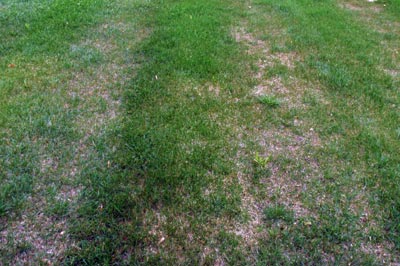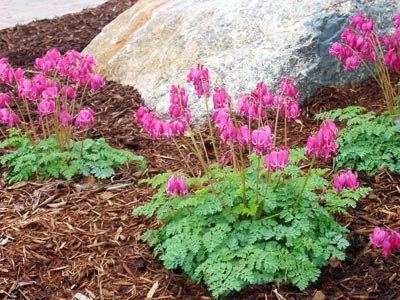What to do about compacted soil
Compacted soil can make growing plants in a vegetable or flower garden difficult. Learn what causes soil compaction and how to prevent it.

 Many gardeners are not aware that the difficulties with their vegetable garden or flower garden could be caused by compacted soils. Lawns can also be affected. You may find soil is difficult to dig in or till up and plants do not grow well. They do not develop as large of a root system as they should. Water may collect after a heavy rain and will remain rather than soak in.
Many gardeners are not aware that the difficulties with their vegetable garden or flower garden could be caused by compacted soils. Lawns can also be affected. You may find soil is difficult to dig in or till up and plants do not grow well. They do not develop as large of a root system as they should. Water may collect after a heavy rain and will remain rather than soak in.
What is causing this? About half of a healthy soil is made up of mineral particles like sand, silt and clay plus organic matter. The remaining half is called pore space. That is the room for air and water movement around the mineral particles. Pore space is required in order to have a healthy environment for plant roots and beneficial microorganisms and earthworms to break down plant residue into organic matter.
Compaction is most likely to occur with heavier soils like clay and loam, but when heavy equipment is used, sandy soils can become compacted. These are soil particles that are packed closely together. The problem may be compounded by events that have happened to the soil over the course of years. The pore spaces are reduced to the point that air and water cannot move freely and plant roots cannot grow easily into the surrounding soil. The soil could remain overly wet longer than is healthy for the plants growing there.
Factors contributing to compacted soil
Over-tilling soil. Over-tilling breaks up the small soil aggregates into single particles. The soil should have little clumps of particles that are bound together in small, pea-sized lumps. When tilling an area multiple times, those little aggregates are broken down. When the soil later gets wet, it does not allow the water to pass through. A mini-pond is created and when the soil finally dries, it resembles an alligator’s skin. This linear pattern of cracked soil does not let air or water in.
Working up soil when it is too wet. Before tilling a garden or working up the soil, make sure the soil is not too wet. Before working in the garden in the spring, take a handful of soil and compress it into a ball. When gently poked, it should fall apart. If it does not, the soil is too wet. Wait until the soil crumbles.
Mixing sand into clay soils to loosen soil. Adding sand creates the opposite of the desired effect. The soil can become like concrete. Add organic matter such as compost, peat moss or leaf mold when loosening the soil.
Compressing soil because of weight. Vehicles parked or driven over an area, construction activities and even places with a great deal of foot traffic can become compacted. It could be a riding mower’s tires running over an area repeatedly.

Dead areas indicate where mower tires repeatedly drove over the lawn, compacting the soil. The path between the tires is robust. Photo credit: Kevin Frank, MSU
Once you have realized your soil is compacted, there are several things to be done. Resist the urge to routinely roto-till or cultivate the garden. Instead, consider adding organic matter by using mulch or compost over the top of a flower bed or simply hand-spade it into the top 3 to 6 inches of soil. For a vegetable garden, put 2 inches of compost on the soil surface and till in and repeat for a total of 4 inches in a season. A goal of 5 to 15 percent of organic matter would be advantageous.

Mulch in a perennial garden. Photo credit: Rebecca Finneran, MSU Extension
If a mechanical rototiller is used, be careful not to repeatedly go over areas that are already cultivated. Using organic matter like straw or chopped leaves in a vegetable garden that can be mowed and turned into the soil in the spring or fall will add more organic matter. Get a soil test once every three years to check on nutrients, soil pH and percentage of organic matter. Soil tests can be ordered through MSU Extension county offices and the MSU Extension Bookstore.
For a large vegetable garden, another solution is to grow a cover crop at the end of the season, then mow and turn in the following spring before planting. The roots penetrate the compacted soil and loosen it. By mowing and turning the mowed tops in, the soil is additionally loosened. Cover crops could include annual ryegrass, winter wheat, winter rye, buckwheat, oilseed radishes and hairy vetch.
None of these fixes are quick or easy. An awareness of what compacted soils are and how to change them is a lifetime commitment to having better soil and better crops.
For more information on a wide variety of Smart Gardening articles, or to find out about Smart Gardening classes and events, visit www.migarden.msu.edu.
Download a printable PDF: What to do about compacted soil



 Print
Print Email
Email


